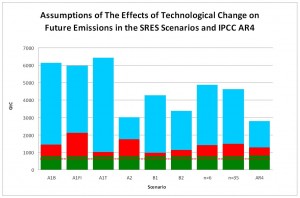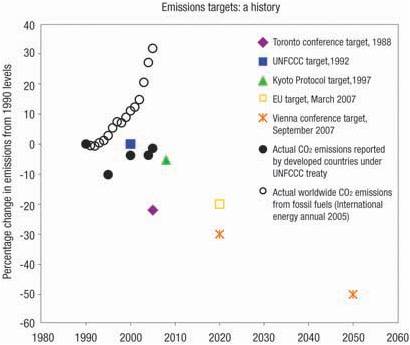The Most Attractive Opportunity
September 7th, 2008Posted by: Roger Pielke, Jr.
In the Guardian today, Rajendra Pachauri, head of the IPCC, is offering policy advice on climate change. He suggests that the “most attractive opportunity” for emissions reductions is to start by giving up meat for a day a week.
‘In terms of immediacy of action and the feasibility of bringing about reductions in a short period of time, it clearly is the most attractive opportunity,’ said Pachauri. ‘Give up meat for one day [a week] initially, and decrease it from there,’ said the Indian economist, who is a vegetarian.
However, he also stressed other changes in lifestyle would help to combat climate change. ‘That’s what I want to emphasise: we really have to bring about reductions in every sector of the economy.’
I’m not sure where this advice comes from. Giving up meat a day a week (or at all) didn’t make the IPCC’s list (p. 64 in this PDF) of top mitigation opportunities in agriculture:
The most prominent mitigation options in agriculture (with potentials shown in Mt CO2eq/yr for carbon prices up to 100 US$/tCO2-eq by 2030) are (see also Figure TS.20):
• restoration of cultivated organic soils (1260)
• improved cropland management (including agronomy, nutrient management, tillage/residue management and water management (including irrigation and drainage) and set-aside / agro-forestry (1110)
• improved grazing land management (including grazing intensity, increased productivity, nutrient management, fire management and species introduction (810)
• restoration of degraded lands (using erosion control, organic amendments and nutrient amendments (690).
Lower, but still substantial mitigation potential is provided by:
• rice management (210)
• livestock management (including improved feeding practices, dietary additives, breeding and other structural changes, and improved manure management (improved storage and handling and anaerobic digestion) (260) (medium agreement, limited evidence).
In addition, 770 MtCO2-eq/yr could be provided by 2030 by improved energy efficiency in agriculture. This amount is, however, for a large part included in the mitigation potential of buildings and transport [8.1; 8.4].
There are plenty of good reasons to limit consumption of meat, and I am all for the advice. But for the head of the IPCC to suggest that it represents the “most attractive opportunity” for emissions reductions is not supported by the IPCC. So where did this advice come from? Such freelancing of political advice opens the door to charges that the IPCC is using its authority to pursue an agenda of lifestyle changes that are favored by its leaders, but which are not addressed in its reports, which are claimed to be “policy neutral.”

